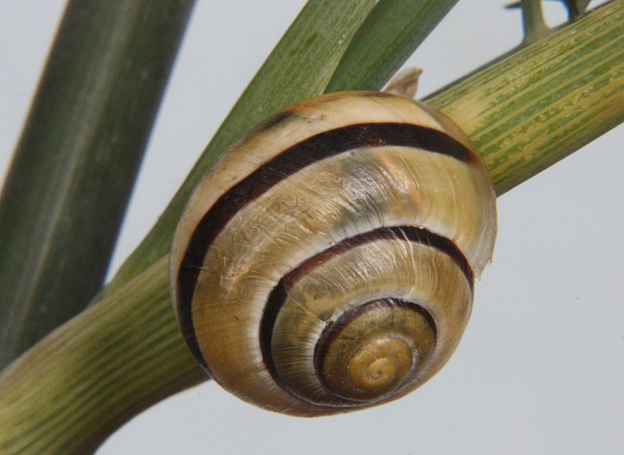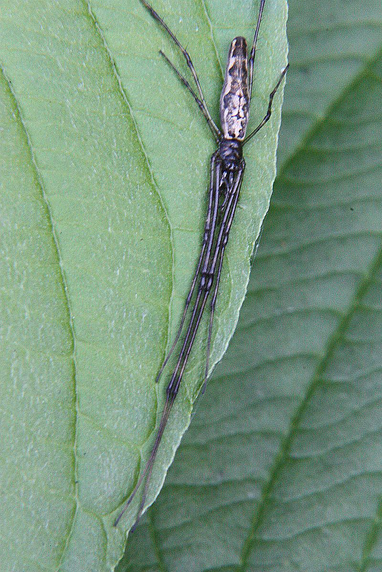August 2 evening
2020 August 2 evening
About a dozen optimists turned up at Mount Tolmie today for the monthly Butterfly Walk. I say “optimists”, because we were all aware that butterflies have been exceedingly scarce this year, and that we would be lucky if we saw any at all. I don’t think it actually says in the Holy Bible “Blessed is he who expecteth nothing; for he shall not be disappointed”. As it is, we saw one Cabbage White on Mount Tolmie before we decided that our destination for the day should be Island View Beach. We saw two or three additional Cabbage Whites on the way to Island View Beach. And while there, we saw 1 Cabbage White, 1 Lorquin’s Admiral and 2 Essex Skippers. Nevertheless a good time was had by all, we enjoyed our walk talking with our friends about butterflies, and we never once approached each other closer than two metres (six feet).
Before we left Mount Tolmie we saw a rather nice snail, shown below, on a nearby Fennel.


Cepaea nemoralis (Pul.: Helicidae) Jeremy Tatum
The day before, Jeremy Tatum saw this long-leggedy spider at King’s Pond. Thanks to Dr Robb Bennett for the identification.


Tetragnatha (probably versicolor) (Ara.: Tetragnathidae) Jeremy Tatum
Jeremy Tatum writes:
Viewers may have seen an article in today’s Times-Colonist (page A3) in which it is stated that the Vancouver Island Blue was last seen in Victoria in 1979. The article does not say who saw it, exactly where it was seen, to whom it was reported, or how it was authenticated. And many of us may not have heard of the “Vancouver Island Blue” or know what it is or was. The butterfly in question is the Vancouver Island population of the Greenish Blue Plebeius saepiolus. This is a butterfly with a fairly wide distribution on the mainland of British Columbia, and which apparently had – but no longer has – a small population on Vancouver Island. Presumably, there were sufficient apparent small differences between it and the mainland populations as to attract a trinomial subspecific appellation: Plebeius saepiolus insulanus.
In natural history circles we generally do not – and should not – use a separate English name for an isolated local population (which is, after all, what a subspecies is). To do so gives an erroneous impression that we are dealing with a distinct species. If we do use an English name for a subspecies, it is usual to put it in parentheses, or quotes, or both. Thus we write about the Yellow-rumped (“Audubon’s”) Warbler, not about Audubon’s Warbler as if we were talking about a separate species. It would make it easier for us to understand each other if we referred to the Vancouver Island population of the Greenish Blue as the Vancouver Island population of the Greenish Blue, and not to talk about it as if there were such a species as the “Vancouver Island Blue”. I find it easier to communicate with and understand others if we all use the word “spade” to mean “spade”, “bug” to mean “bug”, and “species” to mean “species”.
The Times-Colonist article refers to a report about 308 endemic species in Canada. I suspect that many (most?) of these “species” are in fact local populations (subspecies) rather than full species.
